Robo-AO and Kepler
Robotic Laser Adaptive Optics Imaging of 715 Kepler Exoplanet Candidates using Robo-AO
Nicholas M. Law, Tim Morton, Christoph Baranec, Reed Riddle, Ganesh Ravichandran, Carl Ziegler, John Asher Johnson, Shriharsh P. Tendulkar, Khanh Bui, Mahesh P. Burse, H. K. Das, Richard G. Dekany, Shrinivas Kulkarni, Sujit Punnadi, and A. N. Ramaprakash
The Astrophysical Journal, 791:35 (18pp), 2014 August 10
doi:10.1088/0004-637X/791/1/35
High-Efficiency Autonomous Laser Adaptive Optics
Christoph Baranec, Reed Riddle, Nicholas M. Law, A. N. Ramaprakash, Shriharsh Tendulkar, Kristina Hogstrom, Khanh Bui, Mahesh Burse, Pravin Chordia, Hillol Das, Richard Dekany, Shrinivas Kulkarni, and Sujit Punnadi
The Astrophysical Journal Letters, 790:L8 (6pp), 2014 July 20
doi:10.1088/2041-8205/790/1/L8
Robo-AO
- Autonomous laser adaptive optics imaging system
- Palomar Observatory 60-inch telescope (1.5 m)
- 200 objects per night
Sloan-like Filters
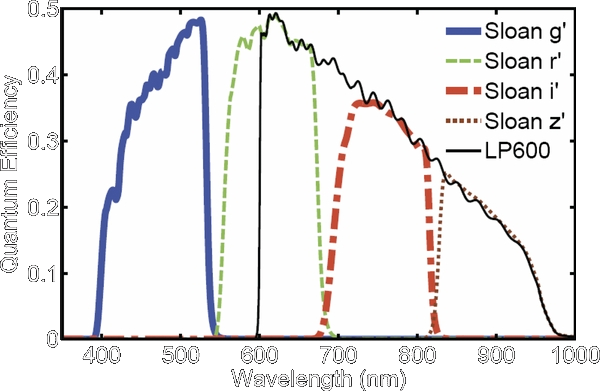
Detector / AO

44" x 44" fov
0.04" pixels
8.6 fps readout
1.2 kHz control loop
90-100 Hz wavefront control
141-218 nm wavefront error
AO Performance

Before correction
AO
Corrected: 0.12"
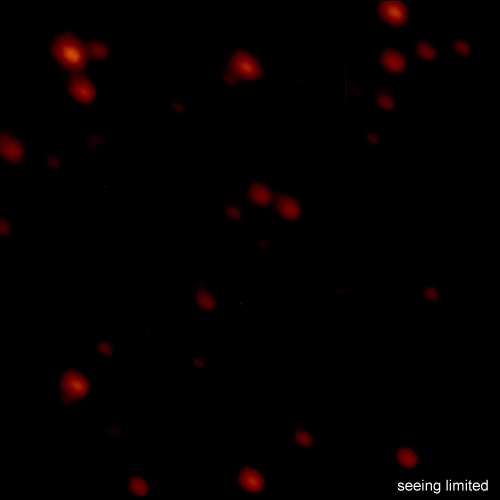
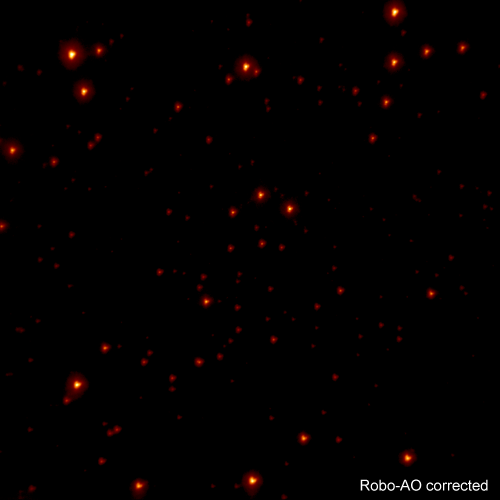
Adaptive Optics
Low Overhead
- 40 s to slew/point
- 40-42 s for laser acquisition
- 30-180 s on target
- Queue-based observing
- Optimizes schedule based on:
Compare to 5-35 min
- priority
- slew time
- telescope limits
- prior observing attempts
- satellite avoidance
200 targets / night
Workflow
- Target selected from queue
- Slew, point, acquire target (80 s)
- Continuous readout for 30-180 s
- Calibrate, then shift each frame based on guide star
- Co-add shifted frames

8.6 frames / second
Single, nearly diffraction-limited image
Faint Companions
PSF subtraction of each object to find blended neighbors.
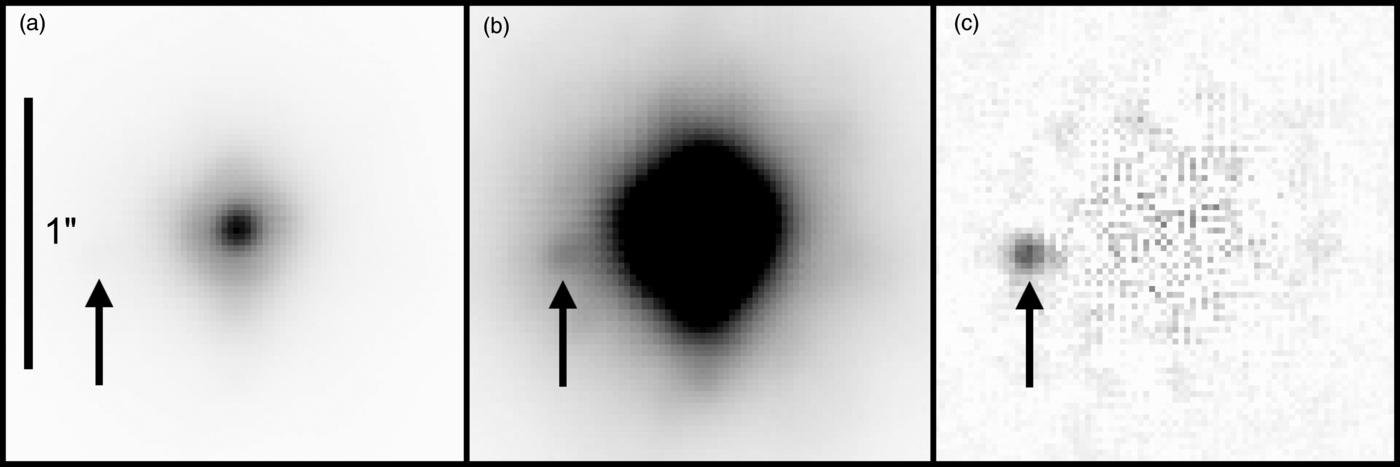
Can detect 1/100 contrast at separations above 0.2".
Stretch to Peak
Stretch to 10%
Subtract PSF
Faint Companions
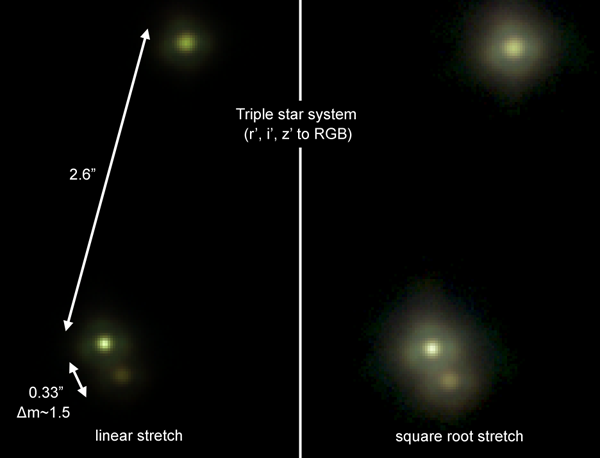
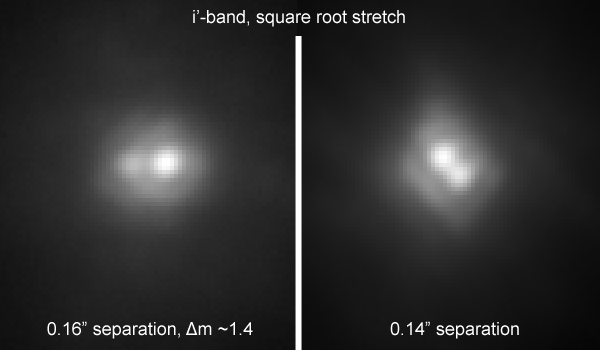

Airy Disk
What's it useful for?
Doesn't go as faint as Keck
but can target a lot of objects
and is cheap.
Kepler follow-up
Bright targets
and lots of them.
Confirmation
-
> 3500 candidates ("KOIs")
-
< 3% confirmed
-
10%-15% may be false positives, e.g., blended transiting binaries
Properties of Systems
- Planet radius, mass, temperature
- Statistics of planetary systems
- Planetary systems in binaries different?
Follow-Up
AO imaging key
Follow-Up Sample
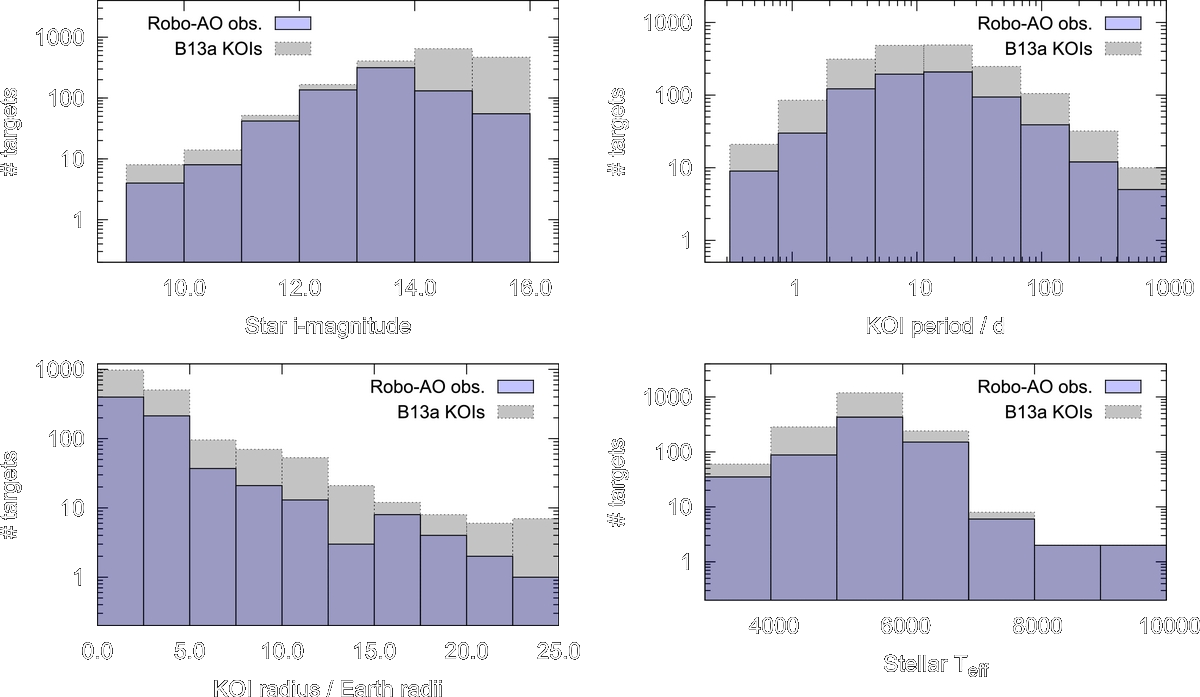
Robo-AO will eventually target every KOI
Begin with representative sample
Should be constant
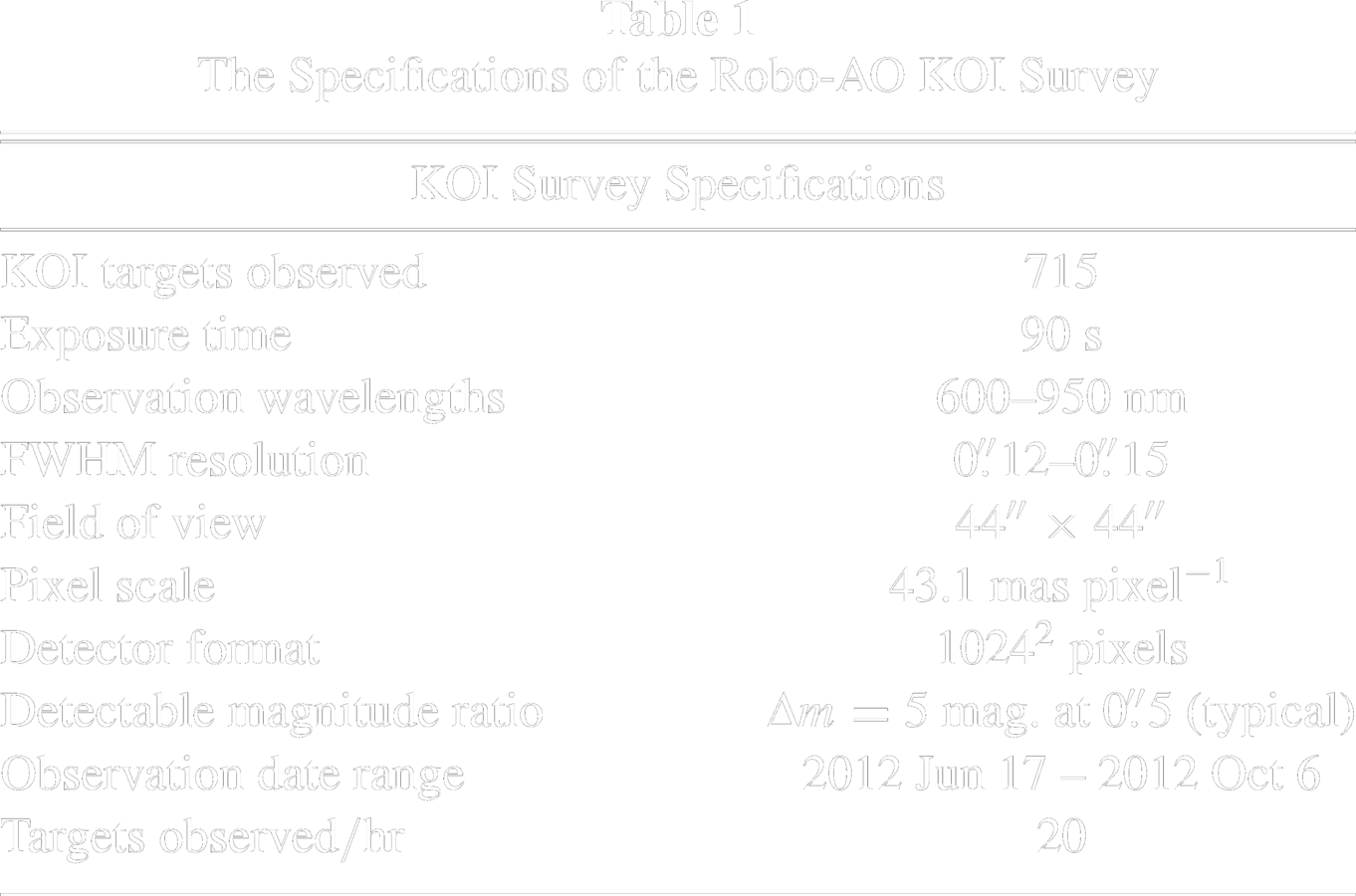
Detect Companions
PSF model obtained from 20 KOIs observed under similar conditions on same night.
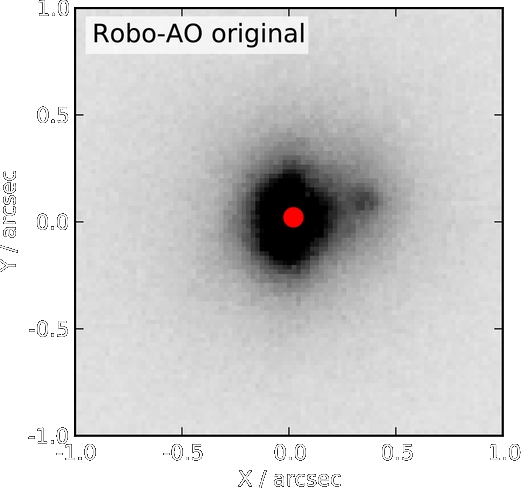

companion
Only photon noise should remain.
Detection Efficiency
Gold standard: Try to extract simulated companions for every source

Next best: Try to extract simulated companions for representative sample
Three classes of targets, based on PSF quality
Discoveries
53 companions (43 new)
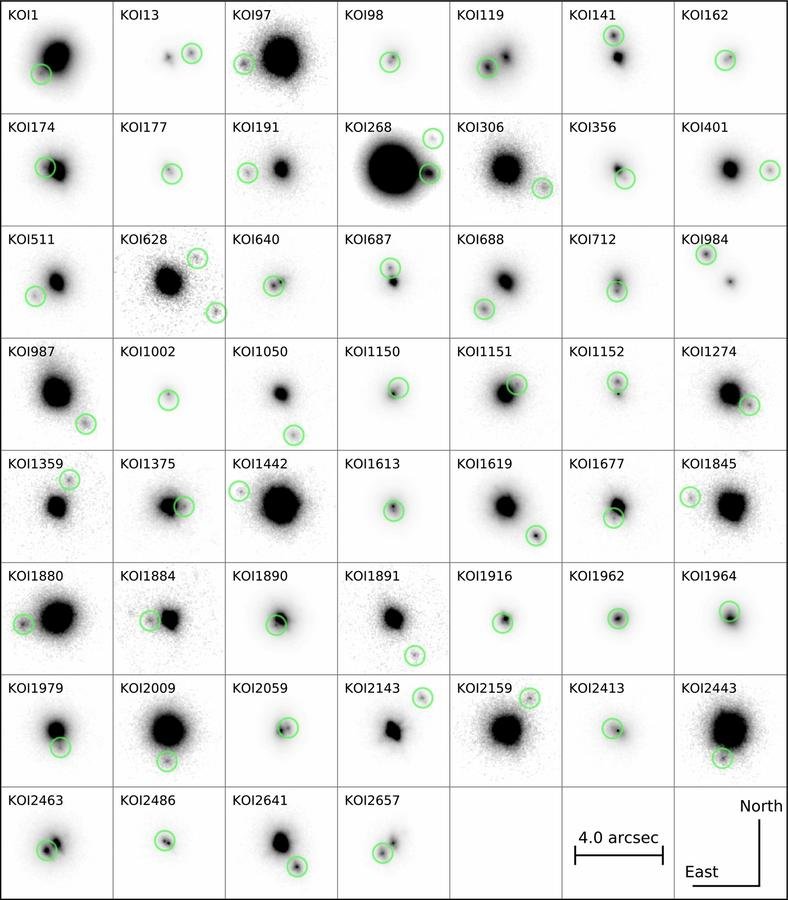
Multiple Systems
Detection Efficiency
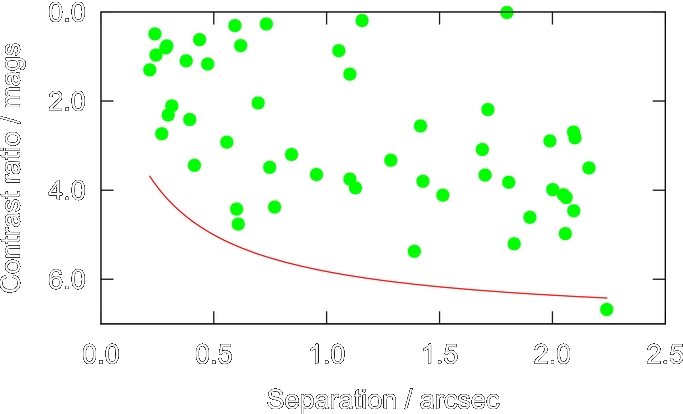
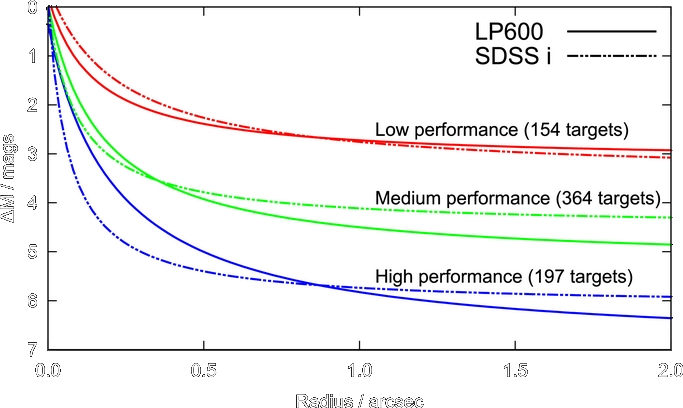
High-quality targets
Earlier simulated sensitivity
Transit Dilution
Which star was transited? How deep was the transit for that star?

Transit depth and planet radius:

If planet transits target star,

If planet transits companion star,


Fraction of light from transited star
Determine from magnitude difference

B is in background
Interesting Systems
KOI-191
- Four planet candidates
- Jupiter-like candidate with 15.4-day period
- Unique in multi-planet systems
KOI-1151
- Five planet candidates
- Two in 2:1 resonance, separated by third planet
- Troublesome configuration
Coincident Mulitples
KOI-268: Habitable zone?
- 1.7 Earth-radii, 110-day orbit, 295 K equilibrium
- Possibly a triple stellar system
- Only "habitable" if orbiting largest star
KOI-1845: Likely false positive
- Two candidates
- 2nd is 21 Earth radii, with V-shaped transit
- Faint stellar companion at large separation
- Likely a background eclipsing binary, not a planet
Statistics of Binaries
Are binary systems different?
Binarity vs. Temperature

Not significant.
Binarity vs. # of Candidates

Might indicate more false positives among single-candidate systems.
Binarity vs. Candidate Period

Short-period
Long-period
Short-period giant planets 2-3x more likely to reside in binary systems (98% confidence)
Kozai oscillations?
Robo-AO
Kepler Binaries
Interesting Systems
Binary Statistics
Robo-AO and Kepler
By Gregory Green
Robo-AO and Kepler
Journal Club presentation on Robo-AO follow-up of Kepler exoplanet candidates. Reviews Law et al. (2014), doi:10.1088/0004-637X/791/1/35.
- 2,094

